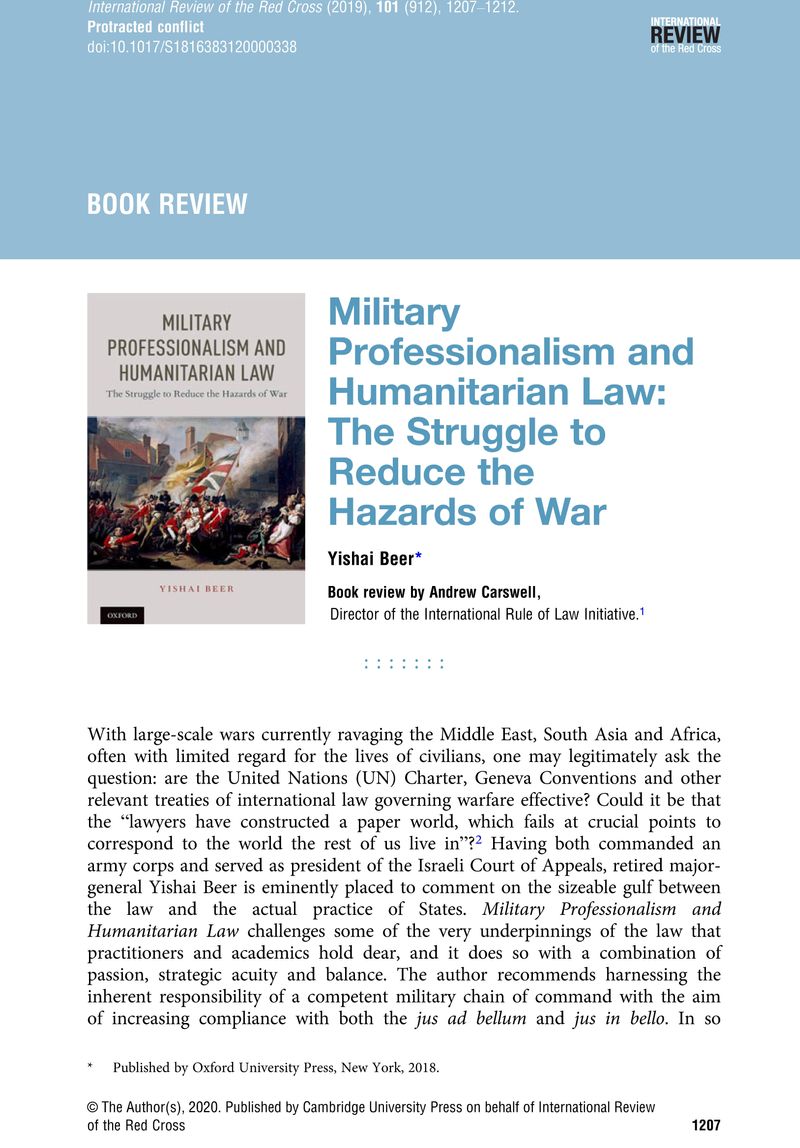No CrossRef data available.
Published online by Cambridge University Press: 12 October 2020

Published by Oxford University Press, New York, 2018.
1 Andrew Carswell has spent thirteen years in the ICRC at headquarters and in the field. He just returned from Syria, where he was the organization's Delegate to the Armed Forces and Deputy Head of Delegation. He is Director of the International Rule of Law Initiative (irli.net), an international law consultant and a former Canadian Armed Forces legal officer.
2 Military Professionalism and Humanitarian Law, p. 14.
3 Ibid., Chap. 1.
4 ICRC, Interpretive Guidance on the Notion of Direct Participation in Hostilities under International Humanitarian Law, Geneva, 2019, p. 50Google Scholar.
5 Military Professionalism and Humanitarian Law, p. 35.
6 Ibid., p. 47.
7 Ibid.
8 Ibid., p. 50.
9 UNGA Res. 3314, “Definition of Aggression”, UN Doc. A/RES/3314, 14 December 1974.
10 Military Professionalism and Humanitarian Law, p. 72.
11 Ibid., p. 114.
12 See irli.net for my own organization's approach to that issue, which revolves around empowering the UN General Assembly in the event of a Security Council veto that is not exercised in accordance with the purposes and principles of the UN.
13 Military Professionalism and Humanitarian Law, Chap. 3.
14 In a policy known as “courageous restraint”, US armed forces were required to minimize civilian casualties, even if it necessitated incurring greater casualties. The general thinking was that fewer civilian casualties would equate to winning the support of the Afghan people. See, for example, Eikenberry, Karl, “The Limits of Counterinsurgency Doctrine in Afghanistan: The Other Side of the COIN”, Foreign Affairs, Vol. 92, No. 5, 2013Google Scholar.
15 Military Professionalism and Humanitarian Law, pp. 135–136.
16 Ibid., p. 152.
17 Ibid., Chap. 4.
18 Ibid., pp. 193–194.
19 Ibid., p. 10.